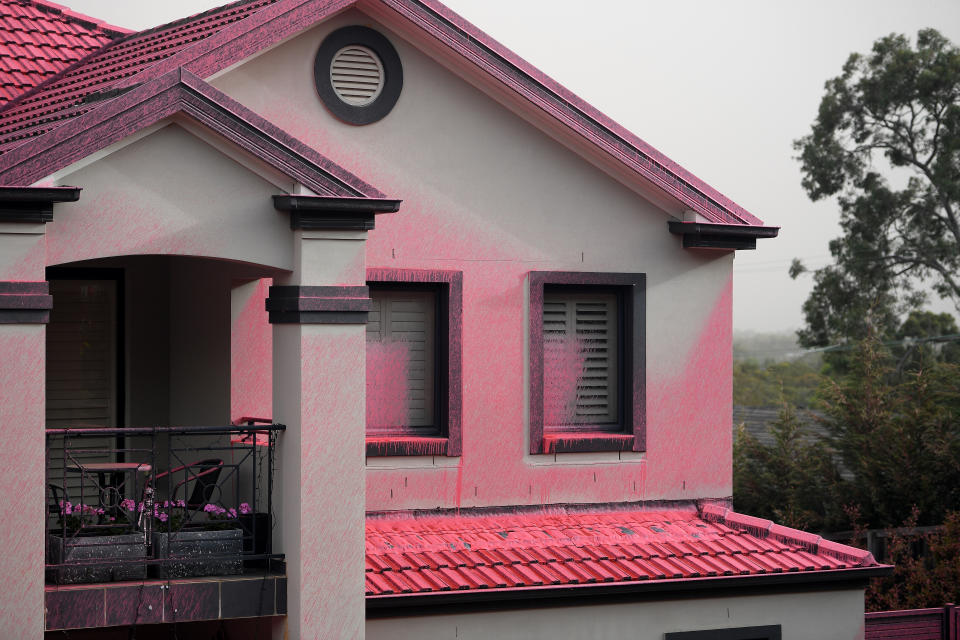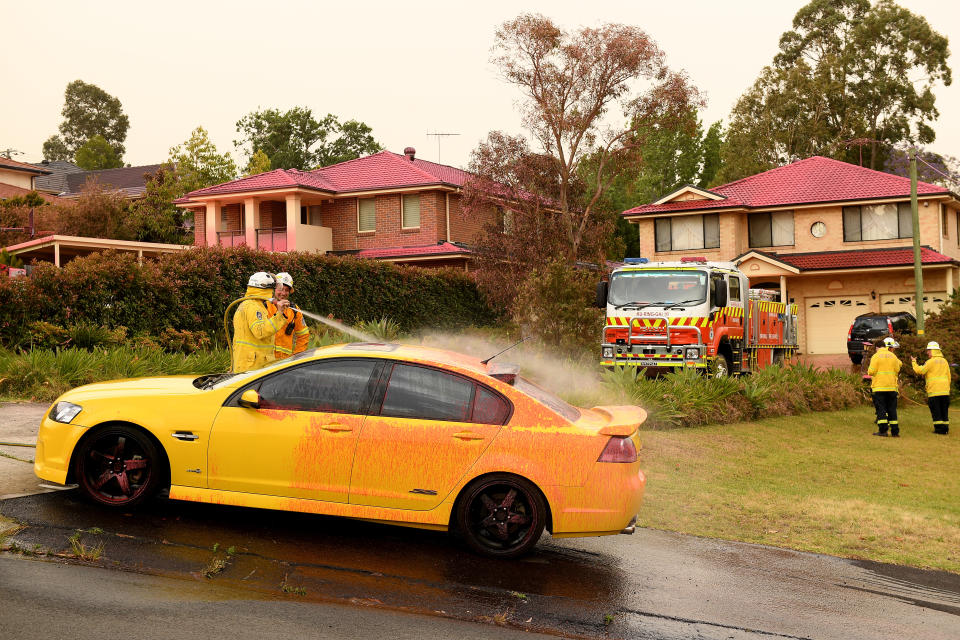What is the pink mixture being dropped on homes?
Chemical fire retardant was dropped on to homes in the Sydney suburb of Turramurra on Tuesday in a bid to prevent the fire spreading, leaving behind a bright pink residue.
The fire retardant is a particularly useful substance and is regularly used throughout Australia when fighting fires.
Rural Fire Service Commissioner Shane Fitzsimmons told Nine News the mixture contains powder and water, which forms a slurry.

The chemicals used in long-term fire retardants are “essentially fertilisers”, according to a NSW RFS Fact Sheet.
“Long-term fire suppressants such as retardants are essentially fertilisers (ammonium and diammonium sulphate and ammonium phosphate), with thickeners (guar gum) and corrosion inhibitors (for aircraft safety),” the fact sheet says.
Fire retardants also come in foam form, which can be utilised by firefighters to control and contain fires, these forms are referred to as ‘short-term retardants’.
The retardant allows water to adhere to vegetation, or whatever it is dumped on, to form a barrier and prevent it from catching on fire.
The pink colour is added to the mix to allow for other aircrafts to identify where the substance has already settled.

“When the water is completely evaporated, the remaining chemical residue retards vegetation or other materials from igniting, until it is removed by rain or erosion,” a NSW RFS document states.
“Fire retardants also work by binding to the plant material (cellulose) and preventing combustion.”
Effects on health and the environment
All long-term retardants used in Australia are “low toxicity”, according to NSW Health.
Risk assessments have been carried out in Victoria and the United States and show the risk to one’s health is “very low” - even to people exposed to the retardant during application.
However, the concentrated powder may cause minor respiratory irritation, before water is added, which is why workers who handle the powder are required to wear gloves, goggles and dust masks.
The taste and smell of contaminated water can be unpleasant, and drinking contaminated water should be avoided, according to NSW Health.

NSW Health has warned people not to consume water contaminated by retardant, provide it to pets or livestock or use it for food preparation.
Boiling the water will not remove contamination.
NSW RFS suggests turning off downpipes if they are connected to water tanks to prevent the retardant from getting into the supply.
NSW Health advises if retardant makes contact with eyes, fresh water should be used to wash it out and consult a doctor if symptoms persist. If the retardant comes into contact with skin, the affected area should be washed with soap and water.
If the retardant is swallowed, the mouth should be washed out with fresh water and a doctor should be consulted.

According to the NSW RFS, there have been no long-term significant effects on birds or mammals, however there has low-level damage observed on native plants.
Generally, pilots will avoid dropping retardants within 100 metres of waterways, as aquatic plants and animals are more sensitive to the effects, particularly foam retardants.
Can the pink stuff be removed?
Sun exposure will degrade fire retardants over time, however it is possible to remove the substance relatively easily.
NSW RFS recommend using a mild detergent and brush to scrub surfaces and flush the residue from surfaces.
As the removal process can be slippery, it is advised by the NSW RFS to wear non-slip shoes and gloves when removing the retardant.
NSW Health also recommends wearing protective equipment - like safety glasses, disposable gloves and face masks.
The Fire Control Centre should be contacted by residents who cannot clean up any residue themselves, or if assistance is required due to drinking water shortages on (02) 6739 6900.
Do you have a story tip? Email: newsroomau@yahoonews.com.
You can also follow us on Facebook and Twitter, download the Yahoo News app from the App Store or Google Play and stay up to date with the latest news with Yahoo’s daily newsletter. Sign up here.


